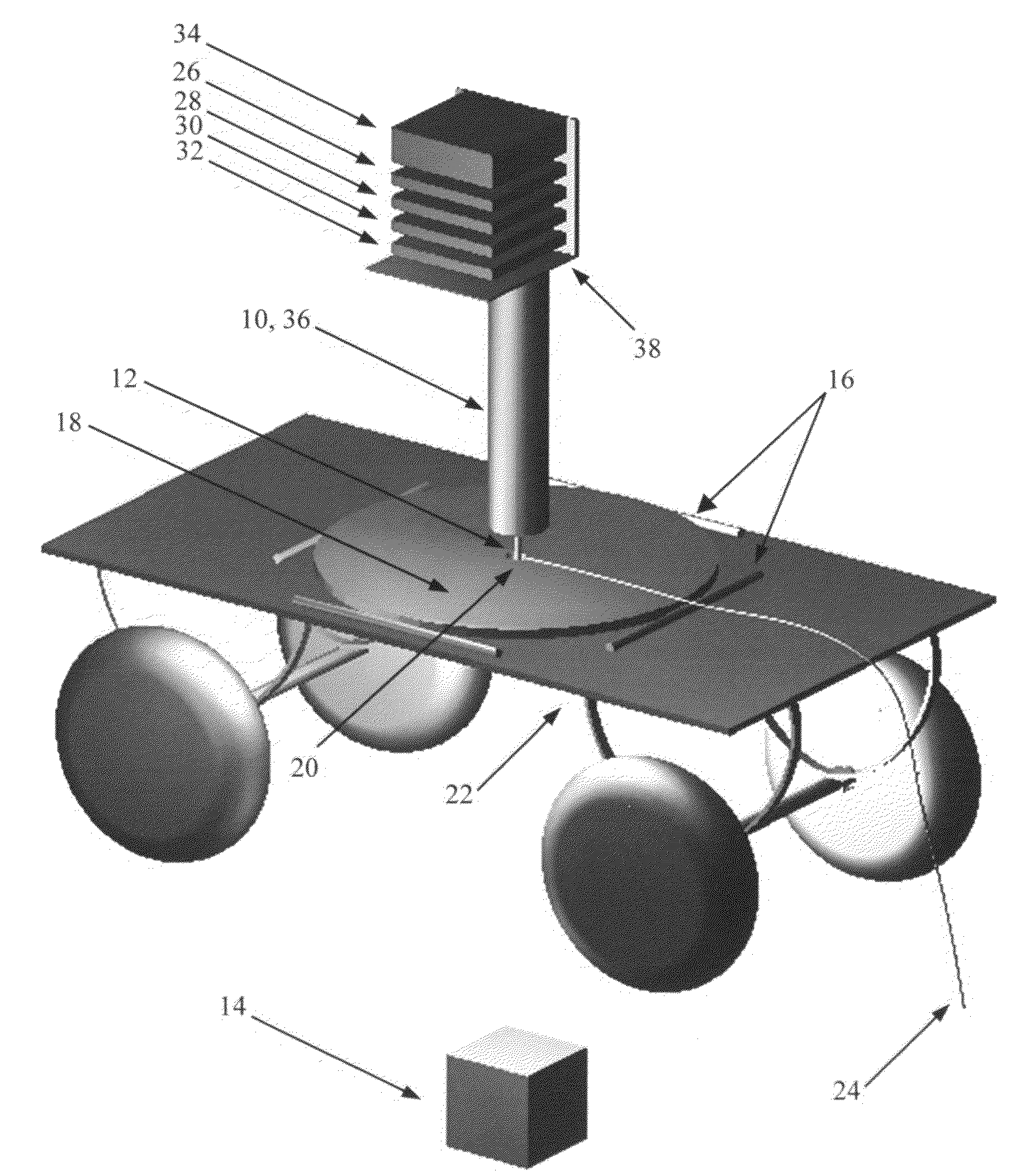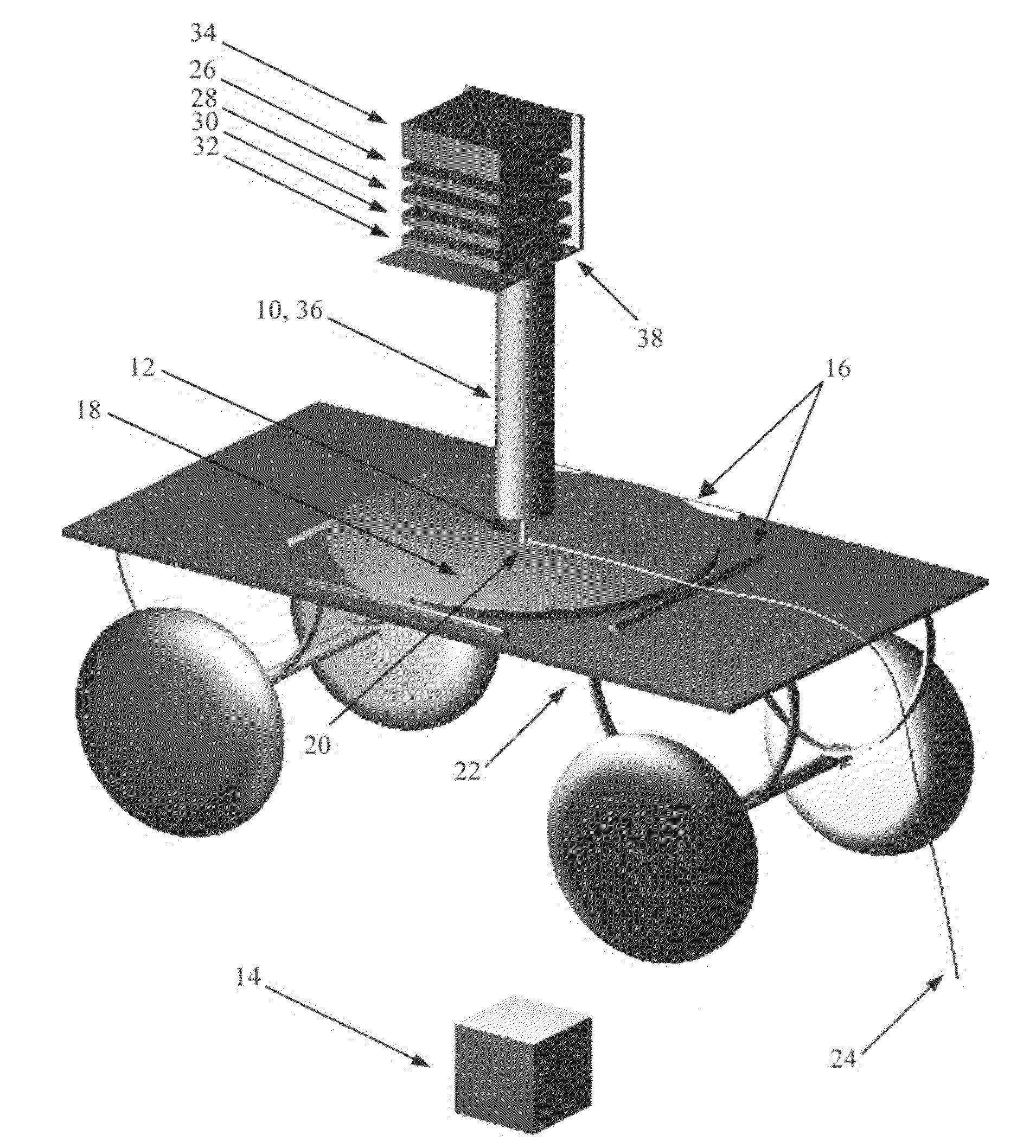Method and apparatus for the identification of lithospheric or shielded material deposits by doppler-shifted response photon spectra from interrogation by ionizing radiation
a technology of shielded material and photon spectra, which is applied in the direction of instruments, machines/engines, and measurement with semiconductor devices, etc., can solve the problems of increased measurement time, difficult to detect or survey in many applications, and practical constraints on the ability to remote detection or survey
- Summary
- Abstract
- Description
- Claims
- Application Information
AI Technical Summary
Benefits of technology
Problems solved by technology
Method used
Image
Examples
Embodiment Construction
[0021]The present invention requires a source of ionizing radiation that is collimated to form a unidirectional interrogation beam. The beam-line is directed at the desired sample location for material interrogation. With sufficient interrogation beam penetration to the desired sample location, reactions of the source radiation with the material residing at the sample location produce prompt- and delayed-response radiation emissions characteristic of the combination of the interrogating particle, the resident material or material-mixture, and the surrounding matrix material. The response emissions may be of a different type than that characteristic of the interrogation beam. In the current invention, ionizing photons generated at the sample location are detected by a remote detector array located in the vicinity of the interrogation source. The interrogation source and photon detection components of the invention are mounted on a field-deployable, orientation-adjustable platform in ...
PUM
 Login to View More
Login to View More Abstract
Description
Claims
Application Information
 Login to View More
Login to View More - R&D
- Intellectual Property
- Life Sciences
- Materials
- Tech Scout
- Unparalleled Data Quality
- Higher Quality Content
- 60% Fewer Hallucinations
Browse by: Latest US Patents, China's latest patents, Technical Efficacy Thesaurus, Application Domain, Technology Topic, Popular Technical Reports.
© 2025 PatSnap. All rights reserved.Legal|Privacy policy|Modern Slavery Act Transparency Statement|Sitemap|About US| Contact US: help@patsnap.com


